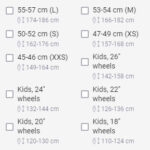Embarking on the exciting world of mountain biking? Choosing your first mountain bike is a crucial step, and it can feel overwhelming with so many options available. If you’re just starting out, finding the Best Entry Level Mountain Bike that fits your needs and budget is key to enjoying the trails. Let’s explore some essential aspects to consider as you begin your mountain biking journey.
When looking at brands for entry-level mountain bikes, Titan and Merida stand out as excellent choices. These brands offer a range of models specifically designed for beginners, providing a solid foundation as you develop your riding skills. Merida, in particular, also offers higher-end models, giving you room to grow within the same brand as you progress in the sport.
Considering the current market, exploring second-hand bikes can be a smart move, especially in regions like the Cape where a vibrant cycling community exists. Local bike shops often have a selection of trade-in bikes. You can frequently discover well-maintained, mid-range bikes at attractive prices, originally traded in by riders upgrading to the latest models. Shops like Marks Workshop in Bellville, known for Merida bikes, and GecoCycles in Brackenfell are worth checking out for pre-owned options. There are also other shops in areas like Kuilsriver that might offer good deals.
When evaluating a potential entry-level mountain bike, whether new or second-hand, pay close attention to these key components:
Gearing: Modern mountain bikes have moved away from the older 3×10 (3 front gears and 10 rear gears) setups. While functional, systems like 2×10 or 2×11 are now favored for their balance of providing sufficient low-end for climbs and high-end for speed. For serious racers, 1×11 or 1×12 drivetrains are common, but these are typically found on higher-end bikes and are not necessary for entry-level riders. A 2x setup offers versatility for beginners exploring varied terrains.
Front Suspension: Entry-level bikes often come with spring-loaded front shocks. These are functional and keep costs down. However, air shocks represent a significant upgrade, offering better adjustability and performance. If you’re considering a second-hand bike, finding one with an air shock at a reasonable price can be a great value.
Tubeless Tires: Punctures are a common frustration for mountain bikers, especially in certain terrains. Tubeless tires can significantly reduce the frequency of punctures. If you’re buying a new bike, inquire about tubeless setups, as some manufacturers offer them as upgrades at a reasonable cost. Converting to tubeless after purchase involves the cost of tires, rim tape, and sealant, which can add a significant expense. A second-hand bike already equipped with tubeless tires in good condition adds considerable value.
Brakes: While older bikes might have cantilever brakes (rim brakes), modern mountain bikes almost exclusively use disc brakes. Entry-level bikes typically feature cable-actuated disc brakes. Hydraulic disc brakes offer superior performance and modulation but are generally found on higher-end models. However, even basic hydraulic disc brakes are more than adequate for the type of riding you’ll be doing on an entry-level mountain bike and provide a noticeable improvement over cable discs.
Finally, the debate between Shimano and SRAM components is a long-standing one in the cycling world, similar to brand preferences in cars. Both are reputable brands offering quality components. For entry-level bikes, both Shimano and SRAM provide reliable options, and personal preference often plays a larger role than objective superiority of one brand over the other at this level.
In conclusion, selecting the best entry level mountain bike involves considering brands like Titan and Merida, exploring the second-hand market for value, and carefully evaluating components like gearing, suspension, tires, and brakes. By focusing on these key aspects, you’ll be well-equipped to choose a bike that allows you to confidently start and enjoy your mountain biking adventures. Remember to visit local bike shops, ask questions, and even test ride a few options to find the perfect fit for you.

